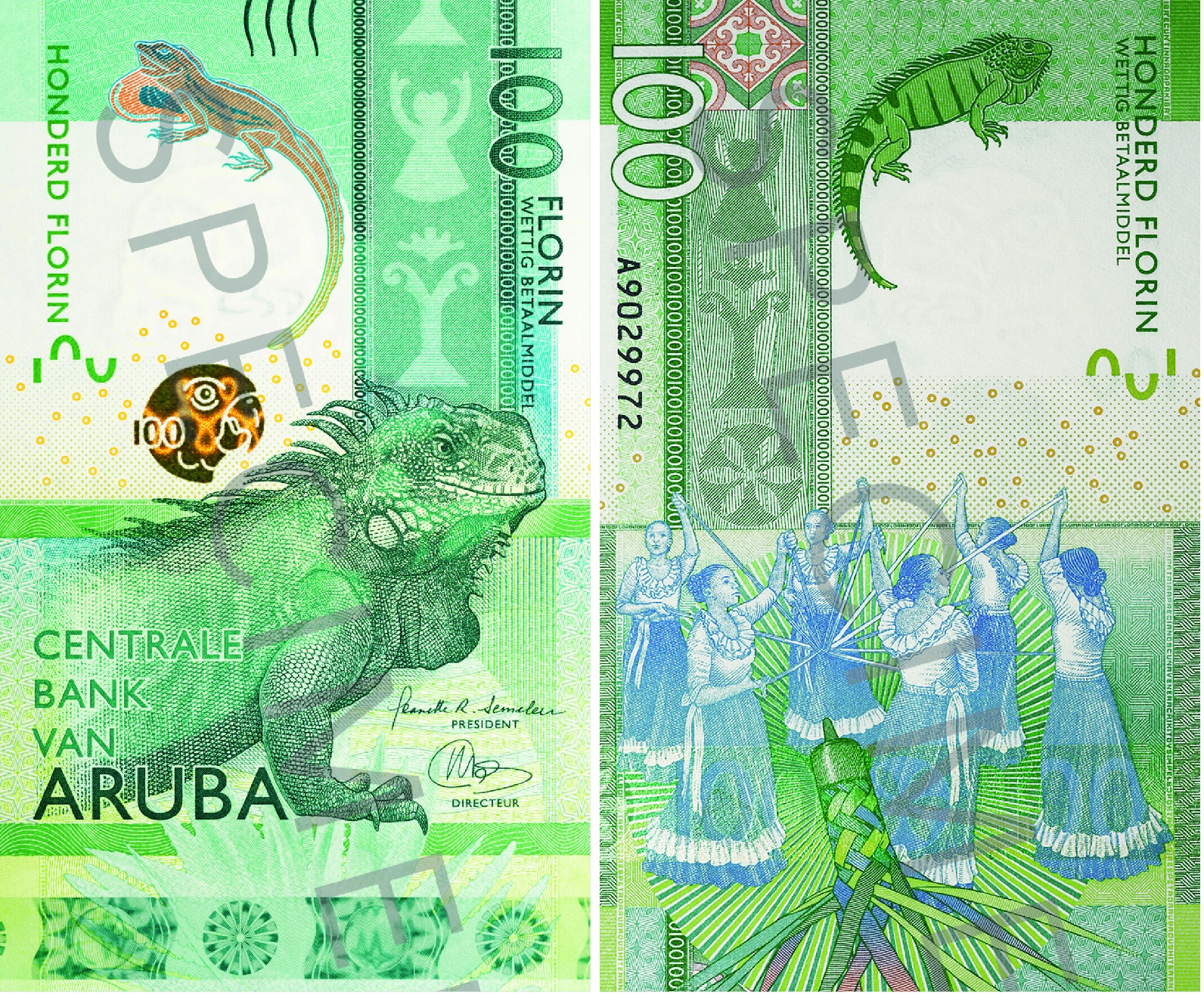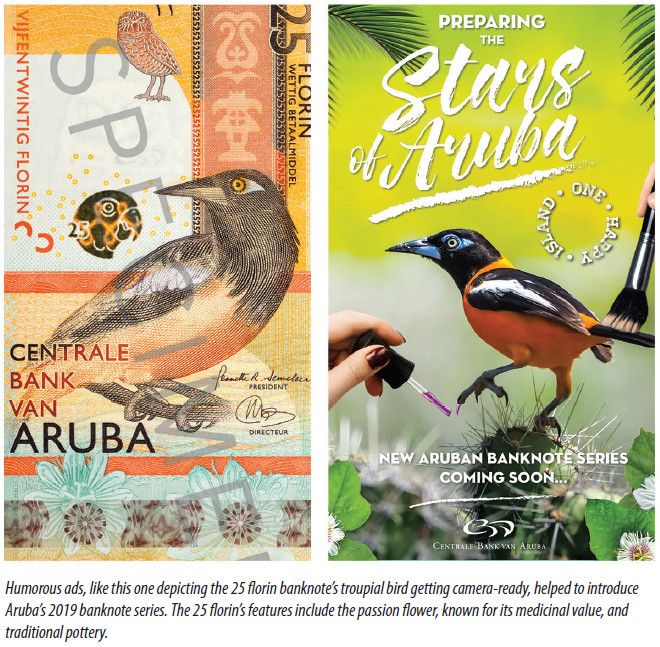Aruba' s new banknotes spotlight the heroes among its flora and fauna

It is said that laughter is the best medicine, and for Arubans, a good dose of humor was just the remedy to help them accept the first new currency design since 1990. Before last year’s overhaul, the florin had been upgraded only once, in 2003, but the former series had become outdated and a target for counterfeiting. Armed with a small team in a small bank on a small island, the Central Bank of Aruba (CBA) set out to upgrade its currency—a journey that lasted seven years, celebrated some native stars, and won the country an international award.
Blessed with beautiful beaches, cool breezes, and lots of sunshine, Arubans have plenty to smile about. But getting the local population to accept what the CBA was trying to do with its new banknote series was a challenge. “Central banks are very dry institutions,” says Jane Semeleer, president of the CBA. She and her team knew that just putting the new notes into circulation and hoping they caught on might not work—an easygoing Aruban smile and nod were not going to be enough.
To introduce the elements contained in the new 2019 series to a population still attached to the country’s old banknotes, the bank hit on the idea of featuring the island’s indigenous wildlife in a series of comical poses for an outreach campaign called “Streanan di Aruba” (“Stars of Aruba”). Ads depicted the currency’s fauna celebrities being primped for their starring roles—think Hollywood glam meets tropical wildlife: birds getting “pedicures,” an iguana at the salon.
The CBA team wanted to spark public curiosity and dialogue about the native stars on the new bills, so they promoted them via social and traditional media. The campaign was a “huge success,” according to Semeleer, and more than 85 percent of the old notes were returned before they were taken out of circulation.
Local pride
The CBA worked with local artists accustomed to capturing the island’s beauty in paintings. The new designs needed to feature Aruba’s flora and fauna—particularly animals that rarely get a second glance, like the red land crab, the endangered green turtle, the Caracara cheriway and the troupial bird, and the iguana—all of which now have their perpetual day in the sun on the new banknotes. Semeleer says it was important to showcase a side of Aruba other than its renowned beaches. “Nature competes with tourism, and to have a sustainable industry, we have to keep our natural habitat in balance,” she stressed. “Aruba’s nature is beautiful, and worth preserving.”
The vibrant colors and enhanced security features of the new family of notes signaled that the CBA team might have an award-winning design series on its hands. The International Bank Note Society (IBNS) agreed, choosing the Aruban 100 florin banknote, with its cheeky young green iguana (they turn gray as they age) as 2019 Banknote of the Year.
The new banknotes also highlight historical landmarks, artifacts, and traditional Aruban culture. The back of the winning 100 florin, the most widely circulated banknote in Aruba, features dancers braiding ribbons in a folklore dance, while the 25 florin banknote heralds Amerindian pottery, and the 10 and 50 banknotes pay homage to architecture past and present.
Safe and sound
In addition to their playful characteristics, the new notes are highly durable and among the world’s most secure, using such technology as high-relief printing; color-changing ink; and a 3D “motion surface,” a moving stripe with miniaturized micro-optics—forensic features that make the currency easily identifiable by law enforcement and the central bank and help mitigate counterfeiting. The enhanced security features were designed by Crane Currency of Sweden.
Like those of its Caribbean neighbors and other countries around the world, Aruba’s economy, with its heavy reliance on tourism, is being hurt by the COVID-19 pandemic. The island nation, however, prides itself on its resilience and its people’s ability to overcome adversity.
Semeleer says that’s why her personal favorite new banknote is the 200 florin, with its unassuming Caracara cheriway bird on the front and a caha di orgel (self-playing piano) on the back. “To me, [this bird] exudes courage and fearlessness,” she says. “If you look over the years of how we survive on this small island, you need to have strength, you need to have courage.” The stars of Aruba’s new banknotes appear to embody the indomitable spirit Semeleer attributes to all living things on the island.

Opinions expressed in articles and other materials are those of the authors; they do not necessarily reflect IMF policy.









